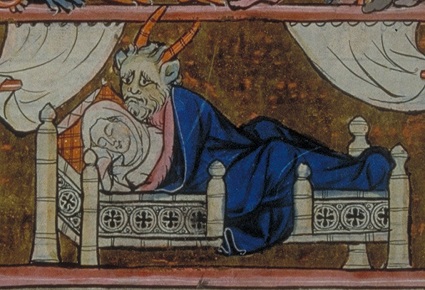This is the third installment in a series of essays studying the biblical Nephilim, in relation to the tale in Genesis 6 of the angelic “sons of God” impregnating the “daughters of men” and bearing children by them. In this essay, we will endeavor to answer the question of whether a spiritual being such as a demon can engage in sexual intercourse with a human being, and if so, whether such unions could produce offspring. Though this essay can be read in isolation, for context it is recommended that you read the previous two installments in the series first:
Part 1: Who are the Nephilim?
Part 2: Watchers and Nephilim
The Question of Demonic Procreation
In our previous installment we demonstrated that the only sensible interpretation of Genesis 6 is that fallen angels (known as the “Watchers” or Grigori) engaged in sexual relationships with human women, who subsequently bore them children. This is not only the most reasonable interpretation of the plain text of Genesis, but it is also affirmed by the rabbinic tradition, the New Testament, and the Church Fathers (some Fathers even hypothesized that the custom of women veiling in Church was instituted to keep lustful demons away from Christian females—see “Head Coverings ‘Because of the Angels“).
Medieval Christians, too, widely assumed that demonic impregnation was possible and indeed continued to happen even unto their own day—although there were considerable disputes on how this could be. There was a lively debate throughout the Middle Ages on the mechanics of demonic impregnation. It was a fascinating discussion that drew on sources as diverse as the Bible, European folklore, Aristotelian philosophy, medieval scientific theory, and pre-Christian Judaic apocrypha. This essay will focus on the particulars of that debate. In studying medieval thought on the question of demonic impregnation, we may find our own perspectives challenged as the medievals tended to ask different questions than moderns, as well as work from a different set of assumptions.
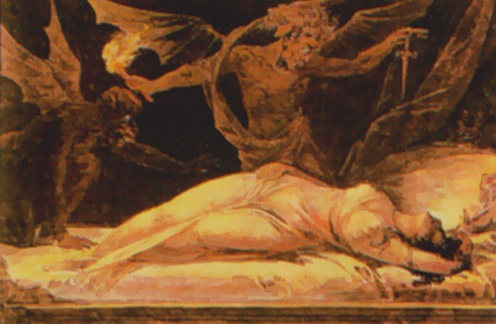
The Tradition of Incubi and Succubi
Since late antiquity demons who lay with men and women were called incubi and succubi—an incubus being a demon who lays with a woman, a succubus being one who lays with a man. Incubus comes from the Latin incubāre, “to lie upon or on top of”, while succubus comes from succubare, “to lie beneath,” which in Late Latin was related to the word succuba, a paramour or illicit lover.
Early Christians took the existence of these beings for granted. The Church Father Tertullian (d. 220) warned Christian women to be on guard against these lustful beings, who would try especially to entice them during the sacred worship of God. He offers this as an explanation for why women should veil their heads during Mass:
“For if (it is) on account of the angels—those, to wit, whom we read of as having fallen from God and heaven on account of concupiscence after females—who can presume that it was bodies already defiled, and relics of human lust, which such angels yearned after, so as not rather to have been inflamed for virgins, whose bloom pleads an excuse for human lust likewise? …So perilous a face, then, ought to be veiled, which has cast stumbling-stones even so far as heaven: that, when standing in the presence of God, at whose bar it stands accused of the driving of the angels from their (native) confines, it may blush before the other angels as well; and may repress that former evil liberty of its head—(a liberty) now to be exhibited not even before human eyes. But even if they were females already contaminated whom those angels had desired, so much the more on account of the angels would it have been the duty of virgins to be veiled, as it would have been the more possible for virgins to have been the cause of the angels’ sinning” (Veiling of Virgins, 7)
While most Fathers did not accept this rationale for why women should veil at Mass, they all affirmed the existence of sexually promiscuous demons, who not only tempted humans to sin through lust, but actually committed sexual acts with them directly. Why did the Fathers assume this was possible?
Obviously this was a biblical concept, referenced not only in Genesis 6 but also Jude 1:6 and 2 Peter 2:4 and backed up by centuries of rabbinic tradition. There existed an entire cycle of Jewish apocryphal works called Enochian literature centered on the amorous exploits of the fallen angels. But we can also cite pagan myth as a source for patristic belief in incubi and succubi. Most pagan mythologies had stories of gods cohabiting with human beings and producing offspring in the form of demigods, or the heroes of Greek myth. It is important to recall that the Church Fathers did not necessarily disbelieve in the reality of the pagan gods; in many cases they affirmed their existence but believed them to be demons. These demons masqueraded as gods, tricking the nations into offering them divine worship. From what we have examined in our previous essay, these gods of the nations were the Grigori, “Watchers,” fallen angels of considerable strength who kept all the nations of the world enslaved in the darkness of error—all, that is, save Israel.
Of course, the specific details of pagan myths were often looked upon as ridiculous fables. But the principal mythological beings themselves were generally believed to exist. So, for example, when the Church Fathers read the story of Apollo becoming the lover of the human woman Coronis, they did not deny the existence of Apollo; rather, they inferred that Apollo was actually a demon.
Thus, the Church Fathers were working not only with biblical texts, such as Genesis 6:4, but pagan myth as well. If the beings in pagan mythology actually existed, they had to be incorporated into the Christian system somehow. A classic example of this comes from a passage in St. Augustine’s City of God where Augustine speculates on the possibility of angelic beings impregnating human women:
Nevertheless, it is the testimony of Scripture (which tells us nothing but the truth) that angels appeared to men in bodies of such a kind that they could not only be seen but also touched. Besides this, it is widely reported than Silvani and Pans [Satyrs and Fauns], commonly called incubi, have often behaved improperly toward women, lusting after them and achieving intercourse with them. These reports are confirmed by many people, either from their own experience or from the accounts of the experience of others, whose reliability there is no occasion to doubt. Then there is the story that certain demons, whom the Gauls call Dusii, constantly and successfully attempt this indecency. This is asserted by so many witnesses of such a character that it would seem an impertinence to deny it. Hence I would not venture a conclusive statement on the question whether some spirits with bodies of air (an element which even when set in motion by a fan is felt by the bodily sense of touch) can also experience this lust and can so mate, in whatever way they can, with women, who feel their embraces. (1)
We see that thought Augustine did not venture a definitive answer to the question, he offers three reasons why he thinks it is at least possible: (1) the testimony of Scripture that angels can take physical form and be touched; if an angel can be touched by humans, clearly it is not stretch to infer they can touch humans sexually; (2) an appeal to common human experience, of both pagans and Christians, verified by many witnesses, and (3) the ability of immaterial elements, such as air, to interact tangibly with human flesh. Of course, air is not truly immaterial, and we cannot speak for the various encounters of others Augustine appeals to. Ultimately Augustine rejects that Genesis 6:4 refers to fallen angels specifically, preferring instead the Sethite hypothesis. This is all irrelevant to the point, though: this passage is important because we see beings of pagan myth being associated with Christian incubi, as well as some theoretical arguments on why it is possible for angels to interact with humans sexually.
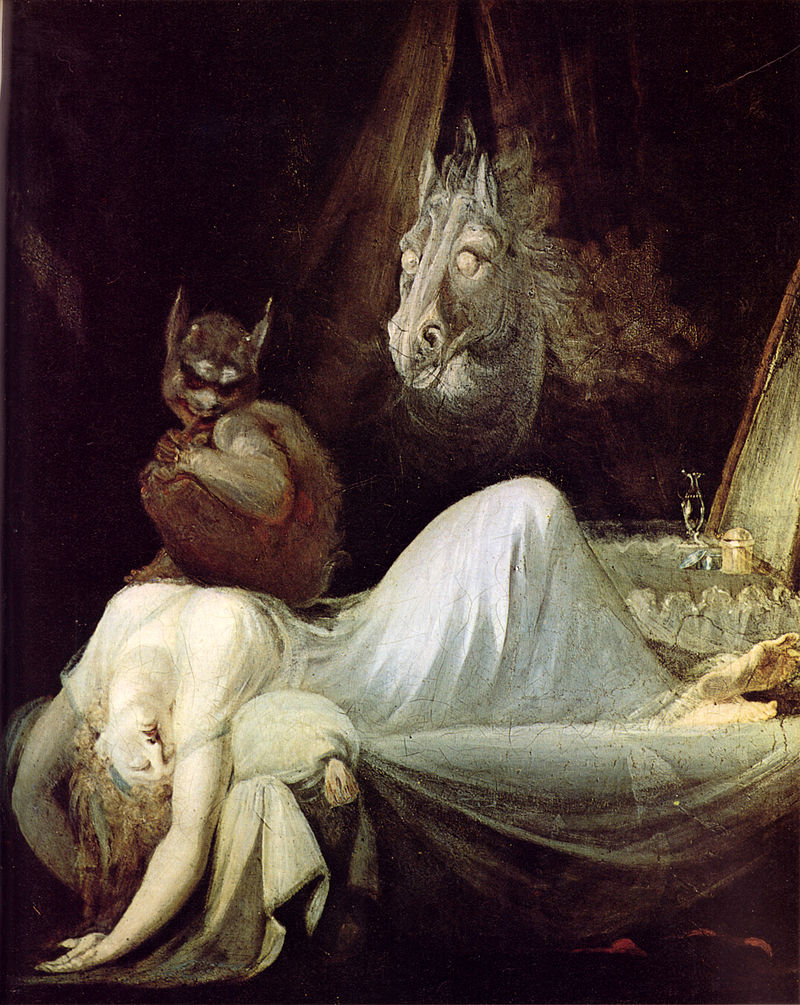
After the fall of Rome these ideas were accepted by the Germanic peoples of Europe, who each had their own traditions of supernatural beings copulating with humans: the old Teutonic Alp, the Hungarian Ördögszerető, the mara of Sweden, etc. These entities were easily identified with the incubi and succubi. The speculations of the Church Fathers thus found fertile ground in the folklore of the peoples of Europe.
Thus the traditions of incubi and succubi passed into Christendom. The storybook De Nugis Curialum (“Trifles of Courtiers”) by Walter Map (d. 1210) contains several stories of succubi and their wiles. According to Map’s tales, the succubi not only lay with men in the night; they can perfectly impersonate others and bring fortune or poverty to their lovers depending on their mood. Such was the tale of the succubi called “Merdiana” who attended Gerbert of Aurillac, the future Pope Sylvester II, allegedly bringing him wealth and elevating him to the papacy in exchange for his consort. According to Map, the pontiff repented and did penance for this before his death, but his marble tomb sweats to this day as a sign of the late pope’s sin. (2) Walter Map also warns that the offspring begotten of these unnatural unions generally come to no good end:
“We have heard of demons, incubi and succubi, and of the peril of cohabiting with them, but we have seldom or never read in old histories that their offspring are happy in their end.” (3)
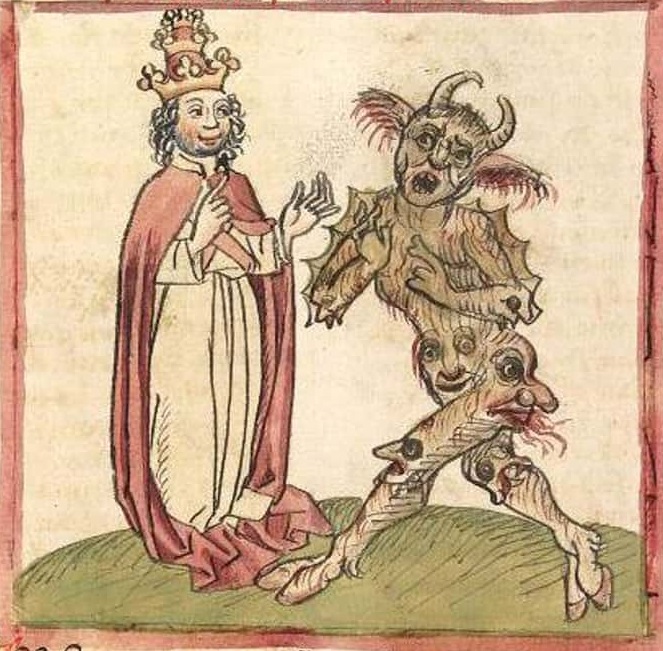
The Problem of Angelic Bodies in the Early Scholastic Era
Henceforth we have been exploring this concept from a cultural perspective. We must now weight its theological merits. While earlier generations of Christians had simply taken for granted that demonic impregnation was a reality, from the High Middle Ages onward Catholic theologians attempted to employ logic to forge theologically precise theories on angels, demons, and their capabilities. One of the biggest problems the medieval theologians grappled with was how angelic entities could interact with the physical world. Pre-Christian Judaism had conceived of angels as having bodies; in Jewish thought, the Watchers had sex with human women with their own physical forms. But Christians held that angels were purely spiritual, possessing no corporeal form and taking up no space. This left medieval theologians to grapple with the question of how angels can act locally.
For example, Peter Abelard (1079-1142) proposed a doctrine called “angelic corporeality and place,” whereby angels, which are naturally incorporeal creatures, are nevertheless circumscribable and have a quasi-spatial position by virtue of their acting in only one place at any given moment. (4) Aquinas, Bonaventure, and Duns Scotus also conceived of angels as occupying a specific place within the spatial cosmos, where their “place” is relative to wherever they are exercising their powers. (5) The scholastic theologian Alexander of Hales (d. 1245) offered the following commentary on the eighth distinction in the second book of Peter Lombard’s Sentences, addressing the question of the corporality of angels:
“It is asked concerning the wicked angels who appear to humans in assumed bodies whether they are united to these bodies as souls [are united to bodies] or whether they assume the body as if it were a garment. It seems, though, that they are living beings [animalia]; they speak, they walk. Hence they do things that are consistent with living beings, for the voice is the sound of the mouth, etc. Also, do not demons acting as incubi generate sons and daughters? And so demons are human, for it is consistent with nature that the parent and offspring are of the same species. It can be said that they assemble the nature with which the child is generated from the hidden seeds of things [ex occultis rerum seminibus] and pour it into women, but they do not cut it off from the bodies that they assume. They [demons] are neither living beings [animalia], nor are they united to bodies, although they move the body for the purpose of walking, just as God spoke to Moses in a subjected creature [e.g., in a cloud or burning bush] but was not thereby Himself a living being [animal]. Similarly, Gregory says in his homilies, ‘A rational animal, that is, an angel, announced the birth of the Lord to the shepherds,’ which is explained thus: that is, an angel in the form of a human.” (6)
Alexander’s purpose here is to clarify the relationship between the evil angels and the physical forms they assume; the question of the propagation of offspring is considered only in passing. Alexander does, however, believe such a thing is possible, but only in an indirect way: the demon cannot himself create new life; it must assemble “seeds of things” (semina rerum) from the earth through which to impregnate a woman. In this, Alexander is following the opinion of Peter Lombard and even St. Augustine himself, who appealed to the story of the magicians of Pharaoh on the subject. Augustine opined that the magicians of Pharaoh could not truly create the matter of the signs they worked before Moses, as only God can create ex nihilo; rather, the demons working through the magicians manipulated “seeds of things” that already exist within the world (though hidden from human perception) to manipulate suitable combinations of elements to bring forth the things they wish. (7) This explains how the Egyptian magicians were able to create serpents through the dark arts.
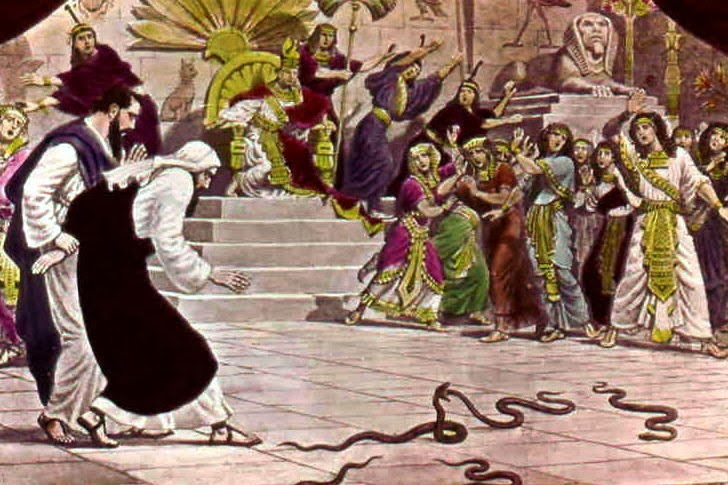
This idea is central to understanding how spiritual entities like the Watchers could impregnate a human woman through assembling the “seeds of things” necessary to bring forth a human child. Of course, the semina rerum needed for human conception is male semen. (8) How did demons get a hold of male semen? This interesting question led to the emergence of two theories on how demonic procreation could happen: sperme artificiel and sperme subtilise.
Sperme Artificiel and Sperme Subtilise
Historian of science Maaike van der Lugt coined these two phrases to describe differing medieval theories on how demons obtained human sperm. Sperme artificiel, “artificial sperm,” held that the demons, lacking actual semen, impregnated women by assembling the other elements of nature in such a way as to trigger the effects of semen (i.e., conception). If this sounds ridiculous, it must be remembered that medieval science affirmed the possibility of the transmutation of one element into another under the proper conditions, such as lead into gold. The demons, being infinitely more knowledgeable in “the elements of the world” (Gal. 4:3) than any alchemist, possess the ability to assemble these elements into sperme artificiel capable of bringing forth new life.
The proponents of the sperme artificiel theory were Alexander of Hales himself, as well as William of Auvergne, Hugh of St. Cher, John of La Rochelle, and the great St. Bonaventure. It should be pointed out, however, that the proponents of this theory tended to be very conservative in its application, generally applying it only to inferior animals, not humans. Only Bonaventure attempted to extend this principle to the offspring of human women. (9) It remained generally more of a hypothetical argument and was the minority view.
The second theory, sperme subtilise (“stolen sperm”) was the dominant position of the 13th century. By this theory, the demon, assuming feminine form, had literal sexual intercourse with a man to steal his semen. This object being attained, the demon then assumed a male form to impregnate the woman with the stolen sperm. This theory was proposed by St. Thomas Aquinas, and would later become demonological canon by its inclusion into Kramer and Sprenger’s Malleus Maleficarum (1487).
Aquinas rejected the notion that demons were capable of producing sperm or any sperm-like substance. His rationale for this is interesting and is drawn from medieval scientific theories of generation. Like most people in the Middle Ages, Aquinas believed that sperm was a byproduct of food and the digestive process. Thus, it did not matter what elements or “seeds of things” the demons collected because the power inherent in semen is only a byproduct of human digestive processes, which are foreign to demons. He said:
“It must be said…that angels do not pour life into their assumed bodies, but rather merely movement: and therefore it must be held that no operations which accompany a living body, inasmuch as it is living, can pertain to angels in their assumed bodies, but only those which accompany a mobile body inasmuch as it is movable, such as moving, pushing, dividing, and things of this sort.” (10)
An angel in human form can move, but it cannot perform truly human functions, such as digesting food. It can put food in its mouth to simulate eating, but the angelic body does not actually digest it—Aquinas is not sure how the consumed food disappears, other than “by some power of the angel” (11). Since the an angel cannot truly digest food, it cannot produce semen, either directly or by combination of elements. Ergo, it must steal the semen from elsewhere.
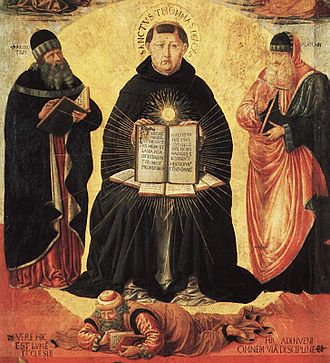
Now that we understand why Aquinas believed sperme subtilise was necessary, let us review two central texts from Aquinas’ writings on how this is effected. Aquinas’s thinking here is guided by the principle mentioned above that angelic beings in human form can only perform those human functions that require simple movement and nothing else. In his commentary on Peter Lombard’s Sentences, Aquinas says:
“Some say that demons in their assumed bodies are in no way able to procreate; and that the “sons of god” [in Gen. 6:4] do not signify angels acting as incubi, but rather the sons of Seth, and that the “daughters of men” signify those who descended from the race of Cain. But because the contrary is held by many, and [because] what seems true to many cannot be entirely false according to the Philosopher…it can therefore be said that by their [i.e., the demons’] action generation is completed inasmuch as they can put human semen in a place appropriate to the corresponding matter, just as they can also bring together the seeds of other things in order to bring certain effects to fruition…So only what is local motion is attributed to them, not, however, generation itself, the beginning of which is not the power of demon or the body assumed by him, but rather the power of that one whose semen it was. Hence the one born is not the demon’s, but rather is the son of a certain human.” (12)
The second statement comes from the Summa Theologica in his discussion on the substance of angelic bodies. Here, after reviewing Augustine’s teaching in City of God, Aquinas says:
“Still, if some are occasionally begotten from demons, it is not from the seed of such demons, nor from their assumed bodies, but from the seed of men taken for the purpose; as when the demon assumes first the form of a woman, and afterwards of a man; just as they take the seed of other things for other generating purposes, as Augustine says (De Trin. ii.), so that the person born is not the child of a demon, but of a man.” (13)
Aquinas thus argues that while demons can cause pregnancy, this is not generation proper because the offspring is not the offspring of the demon, but rather human offspring.
We should also note the sperme subtilise theory essentially affirms that an incubus and succubus are the same being, for the same demon first has sex with the man to obtain his semen, then has sex with the woman to impregnate her with the stolen sperm. The demon is thus either incubus or succubus depending on the role it fulfills.
The Malleus Maleficarum
In 1487 the German clergyman Heinrich Kramer published the Malleus Maleficarum. Commonly translated as The Hammer of Witches, the Malleus Maleficarum was a compendium of 15th century demonology, including recommendations for identifying demonic activity and interrogating suspected witches. The Malleus is a controversial text; some of the ecclesiastical approbations appended to it are believed to have been forged, there is good evidence the theological faculty at Cologne condemned the procedures recommended in the text, and Kramer himself was expelled from Innsbruck for illegal behavior and sexual obsession with a certain woman. (14) In practice, the Malleus was referred to primarily by secular courts; the Inquisition never used the text. In fact, the Inquisition denied any authority to the text and may have even censured Kramer himself after its publication. (15) Thus, we must take special care not to present the teaching of the Malleus Maleficarum as “the teaching of the Church,” which it certainly was not. It does, however, accurately reflect contemporary attitudes of many late medieval scholars who took questions of witchcraft and demonology seriously. Though not an authentic window into the mind of the Church, if is certainly a window into the mind of the age.
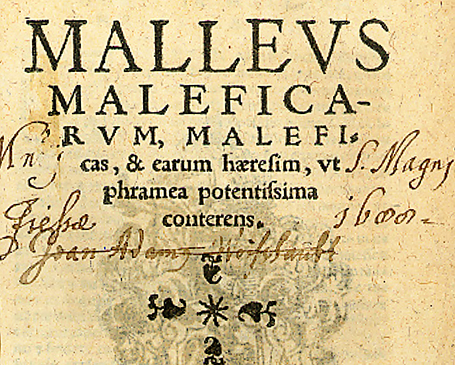
The subject of demonic impregnation is addressed by the Malleus in Part I, Question 3, “Whether children can be generated by incubi and succubi?” The section begins by listing all the objections against demonic impregnation. Today we would find these objections very scholastic in nature, centering on questions of cause and effect, the nature of spiritual movement, the local actions of spirits, etc. The specific objections are not relevant here, because ultimately the Malleus rejects them and affirms that demons can indeed impregnate women. The text elaborates on the superior will, intelligence, and power of demons compared to human beings, and then says:
“Through the wantonness of the flesh they have much power over men; and in men the source of wantonness lies in the privy parts, since it is from them that the semen falls, just as in women it falls from the navel. These things, then, being granted for a proper understanding of the question of Incubi and Succubi, it must be said that it is just as Catholic a view to hold that men may at times be begotten by means of Incubi and Succubi, as it is contrary to the words of the Saints and even to the tradition of Holy Scripture to maintain the opposite opinion.” (16)
The last clause is a powerful statement, asserting that it is contrary to Scripture and tradition to deny that demons can impregnate women. The section goes on to buttress this claim with an argument from authority, citing St. Augustine’s passage in the City of God quoted above, as well as a passage from St. Isidore. The citation of Augustine is interesting, for, as we have seen, Augustine denied that the “sons of God” in Genesis 6 are fallen angels, preferring instead the Sethite hypothesis. But recall that even though Augustine denied demonic impregnations had happened in that specific case, he affirmed its plausibility in general. This is the angle the Malleus takes as well, marshaling several biblical glosses to stress the point. The reference to St. Isidore of Seville says:
“Blessed Isidore, in the last chapter of his 8th book, says: Satyrs are they who are called Pans in Greek and Incubi in Latin. And they are called Incubi from their practice of overlaying, that is debauching. For they often lust lecherously after women, and copulate with them; and the Gauls name them Dusii, because they are diligent in this beastliness. But the devil which the common people call an Incubus, the Romans called a fig Faun; to which Horace said, ‘O Faunus, love of fleeing nymphs, go gently over my lands and smiling fields.'” (17)
It is obvious that Isidore is simply parroting City of God here, though it does establish that such was the belief in Spain during St. Isidore’s time. But the Malleus has made its point, and the final consensus of the text is that “devils do indeed collect human semen, by means of which they are able to produce bodily effects; but this cannot be done without some local movement, therefore demons can transfer semen which they have collected and inject it into the bodies of others.” (18) Thus, following the precedents established in the 13th century, the Malleus Maleficarum affirms the possibility of demonic impregnation through stolen sperm, sperme subtilise. And this seems representative of the majority consensus of medieval theologians who addressed the question of demonic impregnation. Even a thinker as erudite as St. Albert the Great affirmed the ability of incubi and succubi to impregnate women:
“We see persons known carnally by them [demons], and places in which a man is hardly able to sleep through the night without a demonic succubus coming to him. Similarly, public rumor concerning Merlin, the son of an incubus, bears witness to this, so it seems…In reply to what was asked about generation, I do not know for sure what I ought to say, but it seems more probable that they [i.e., demons] are succubi to one and incubi to another. In fact, I understand from one most truly who is still living in our own day that when he was subject to the sin of masturbation, on a certain occasion an infinite number of cats appeared around him while he was polluted, and with the greatest yelling and noise they licked up his semen and carried it off.”(19)
Albert’s recollection of the bizarre story about the cats does not imply that he is denying the traditional belief in the sexual activities of incubi and succubi. He is affirming that these beings exist and steal sperm; his story merely illustrates that there is more than one way this can be accomplished.
We have gone quite a bit astray from our original consideration of the sons of God and the Nephilim. By now the arguments of the medieval theologians and the sperme subtilise hypothesis should have raised a powerful objection in the mind of the reader: If the only way demons can procreate is by stealing human sperm and transplanting it, then they really cannot procreate at all. No human could be a child of a demon. The Nephilim cannot be offspring of fallen angels; they and others like them must necessarily be human offspring. And if they are merely human offspring, from whence did they attain their mighty stature? For, if the role of the incubi/succubi is merely to transport stolen semen from a man to a woman, it seems there could be no way for the demon to invest the offspring with any powers or evil disposition. And if not, then for what purpose to demons even practice sperme subtilise to begin with? What do they gain from it?
To answer these questions, we must turn to medieval science— specifically astrology—as well explore as how medieval people understood conception.
Astrology
Astrology—the belief that the stars were able to influence human affairs—was universal in the Middle Ages. Common people took it seriously, theologians affirmed it, and even popes consulted astrologers. It must be remembered, however, that astrology was considered a scientific principle, not a superstition or occult practice. It was believed that the stars emitted rays that had certain effects, for good or ill, on human beings. The person was most impressionable at birth, and so the rays a person is exposed to at the moment of birth could produce powerful effects on that child’s disposition. This is why the stars under which a person was born were considered such an important factor in astrological prognostication.
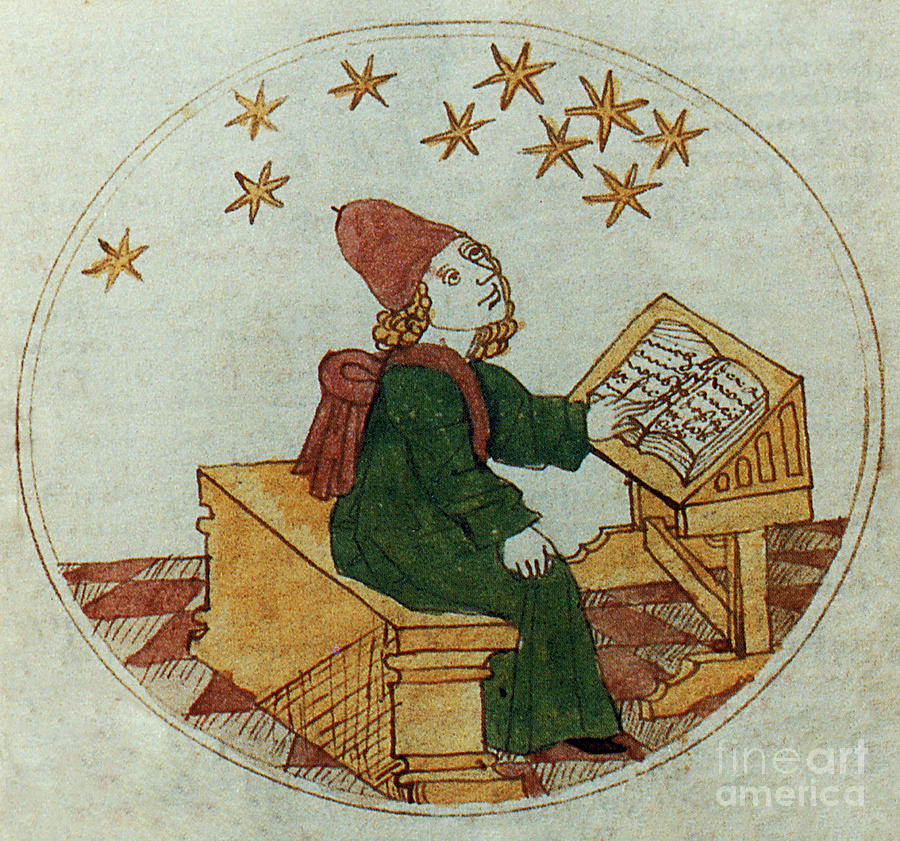
St. Thomas Aquinas addressed the question of how demons can invest the offspring of the women they inseminate with any superior abilities if the semen does not belong to them. Since the demons steal human semen, the offspring produced are regular human beings, and should be not different or stronger than children created through natural generation. But Genesis 6:4 clearly teaches that giants were born when the sons of God had intercourse with the daughters of men. Aquinas answers this question with an appeal to astrology:
“Nevertheless it is possible that stronger and bigger humans could be produced in such a way because demons, wishing to appear miraculous in their deeds, are able to actively contribute to this by observing the designated positions of the stars and the disposition of the man and woman, and particularly if the seeds that are used as instruments achieve a certain increase of power through such use.” (20)
The Malleus Maleficarum agrees with Aquinas. Whereas humans are scarcely able to make astrological prognostications with any dependability, demons, by virtue of their superior intelligence, are able to do so:
“And as to their intelligence, he will find that [the demons] excel in three points of understanding, in their age-long experience, and in the revelation of the higher spirits. He will find also how, through the influence of the stars, they learn the dominating characteristics of men.” (21)
The demons thus steal sperm and inseminate women at certain specific times when the stars are aligned to produce the most malicious results—producing human children whose temperaments are so unruly and disposed to evil that they can be manipulated by the demons. The Malleus Maleficarum goes as far as to suggest that the demons do this for the purpose of creating witches, as “some [of these children] are more disposed to work witchcraft that others, and that they molest these chiefly for the purpose of such works.” (21) Moreover, by carrying out these schemes under the best astrological conditions, the demons can even impart certain physical characteristics to such offspring, “breeding” them for certain physical qualities, such as superior size or strength.
But that is not the only way demons could impart certain traits to human offspring.
The Theory of Maternal Impression
Medievals believed in something known as the theory of maternal impression. Drawn from the writings of Aristotle and Galen, this theory held that the characteristics of a child were entirely determined by the father. This included the child’s physical appearance, bodily constitution, and temperament—basically everything.
The theory presumed two fundamental biological principles, (1) the absolute vitality of the semen, and (2) the impressionability of the woman. We shall consider these each in turn and then explore how they relate to medieval ideas about demonic impregnation.
The Absolute Vitality of the Semen
The male role in procreation was considered active, whereas the female was passive. The entire power of generation was found within the male semen. The woman’s primary function was to serve as a receptacle for the growth of the fetus and supply the uterine blood that would make this growth possible. Remnants of this notion still live on today in references to semen as “seed.” Just as the entire developmental potential of plant will is contained in the seed, so everything a child will become is contained in the man’s semen. The woman provides the place for the man to plant his seed. The woman’s role is entirely passive. A Florentine text from 1433 speaks of a woman’s duty “to carry [the children] procreated by their husbands—they who, like a little sack, hold the perfect natural seed of their husbands, so that people will be born.” (22) Italian philosopher Marsilio Ficino, writing about the resemblance of sons to their fathers, said, “The son is very like the father, being produced of his substance and close to him in complexion.” (23) Thus, in a very real ontological sense, a child was more the father’s than the mother’s.
One might ask, if everything about the child was determined by the father’s seed, how did medieval theorists account for children who resembled family members on the mother’s side? Medical authors attributed this to a kind of struggle between the active principle of the father’s seed and the passive contribution of the mother. As an effect of original sin, the mother’s body put up a kind of passive resistance to the man’s seed, resisting its attempts to imprint itself on her. This resistance was often described as a “disobedience” or “indisposition.” A woman who was perfectly submitted to her husband in body and soul and resplendent with all the Christian virtues, however, would find that her body “submitted” to her husband in the reproductive process, bearing, ideally, a son who resembled the father. But if she was stubborn, insubordinate, or nurtured secret sins, her feminine rebelliousness would flare up, marring the transmission of the father’s likeness, perverting the seed, and giving rise to children who looked more like the mother. A woman thus proved her devotion and purity by giving birth to sons who looked like their father. (24) Such a wife was a “good woman” in a very literal sense.
The Impressionability of the Woman
Having considered the active principle, now let us consider the passivity of the feminine principle. The woman’s menses were conceived of as soft wax upon which the man stamped his image. Following the Aristotelian principle that anything reproducing itself tries to create the most exact likeness possible, the father was the one who reproduced himself using the woman’s body as a tool.
The impressionability of the woman’s gestational processes extended beyond the male seed, however. A fetus took corporeal form based on the conditions of the uterus. The mother could thus alter its development by her behavior and how she carried herself. We obviously know this to be true today in terms of ingestion; e.g., a mother who drinks heavily or does drugs during pregnancy can harm the child. But medieval physicians believed this applied to the focus of the mother’s mind as well. It was generally accepted that mothers could physically shape their children by impressing upon them images of external objects they had seen during pregnancy. A focus on roses might produce a rosy complexion, or hunger for strawberries a strawberry shaped birthmark. Meditation on a painting of John the Baptist might produce a child covered with hair. (25)
The woman thus had considerable influence over how their child developed. Pregnant women would be presented with decorative wooden salver called a desco de parto. This was a tray painted with some image upon which the woman could focus: a depiction of a healthy male child, or a birthing room with everything going well, or scenes from the Bible to cultivate pious dispositions. By gazing at the image on the desco de parto the mother could literally form her offspring, raising her chances of producing a healthy son and bringing her stubborn female principle into submission.

Of course, the implication of the this is that maternal impression could also be used for devious purposes. Katharine Park, in her book The Secrets of Women on female dissection in the late Middle Ages, says, “This theory also permitted less salutary forms of female intervention in the process of generation; as medical writers were fond of pointing out, women who had become pregnant in the course of an adulterous relationship might escape detection by contemplating their husband’s face or portrait, thereby impressing his likeness on a bastard child.” (26) Thus, even when a son bore the exact likeness of his father, a man could never be fully certain that his child was his own, especially if he was less than confident of his wife’s loyalty.
Demonic Corruption of Seed
The theory of maternal impression leaves open several avenues for an incubi or succubi to interfere in the natural procreative process for nefarious ends.
First, the seed itself is liable to corruption by the succubus. Once the semen has been taken from the man, the succubus “corrupts” it with its own pollution. It is unclear how this corruption works exactly, but it follows the theological principle that demonic powers cannot create, only pervert and twist things God has created. We also know that demons can possess or pervert other physical objects, which subsequently need to be exorcized before being used. Similarly, male semen can fall under the oppression of a demon and be twisted to perverse ends. Since the woman receives the man’s seed as wax receives a seal, if the demon is able to corrupt the seed, the resulting child will also be corrupted. He may incline to evil, or be particularly rebellious against his parents, or be endowed with supernatural abilities. Recall the Malleus Maleficarum suggested that such offspring are prime candidates to be turned to witchcraft by the demons once the child has grown.
Second, considering the woman, the demon may corrupt her mind to focus on dark or sinful themes, or, if possible, to ger her to actually commit heinous sins so that the corrupted seed is imprinted with a character disposed to evil. This can be brought about through the normative powers of demonic temptation familiar to Christians. Presumably, the incubus chooses women it believes will be particularly susceptible to this sort of temptation, perhaps assaulting them under a certain astrological sign when the woman is at her weakest.
Third, we have already seen how the time of conception and birth was relevant from an astrological perspective. By arranging so that the child is born under a certain astrological sign, the demon can ensure that it is endowed with whatever physical or temperamental characteristics the demon desires.
Presuming all three of these causes are effected—the demon obtains and corrupts the semen of a man, prepares the woman to receive the corrupted seed by drawing her to wicked thoughts and sinful deeds, and then deposits the corrupted semen in the compromised woman under the right astrological sign—the demon can bring forth a child that may be biologically human but is a for all intents and purposes in the service of the evil one, a monster in body and soul.
European folklore had designated these offspring as cambions, or “changelings.” Cambion comes from the Latin cambiare, “to exchange.” Sometimes cambions and changelings are treated identical, sometimes they are distinct. William of Auvergne, Bishop of Paris (d. 1249) wrote of “cambiones” as those “having been exchanged” and called them “the sons of incubi demons.” (27) It is unclear whether the cambion is exchanged in the sense that the natural process of procreation has been exchanged for the demonic perversion, or whether a child has literally been exchanged in the sense that it was stolen by the demon and replaced by a demonic doppelgänger, a “changeling” in the traditional sense. There were various folk signs that were supposed to identify a cambion; for example, constantly wailing for milk and refusing to be satisfied, being so heavy that not even a horse can hold the child, going without a discernible breath or pulse until age seven, crying whenever they are touched, and many other mirabilia.
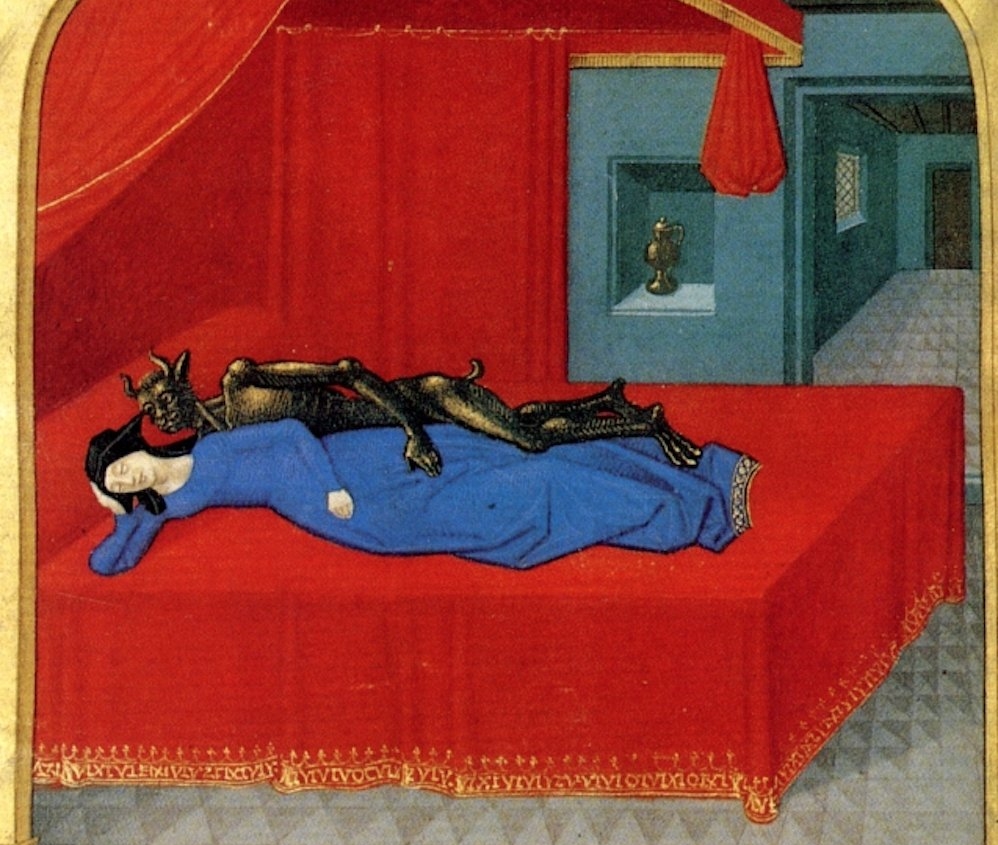
The Watchers and the Nephilim
We will now conclude by returning to the theme of the Watchers and the Nephilim. We have seen how medieval theologians combined biblical texts, Aristotelianism, scientific theories, and folklore to create a consistent hypothesis for how and why demons interfered in human procreation for their own ends. How does this apply to the case of the Watchers and the Nephilim in Genesis 6?
The biggest problem with everything we have been exploring is that so many of the assumptions the medievals built their arguments upon are not true. The stars have no influence on a person’s temperament. The woman’s body is not passive in the procreation of children (28), nor does the entirety of procreative power reside in the semen. And the woman certainly cannot alter the constitution of her unborn child by what she looks at or thinks about. Given these errors, can the theory be salvaged? Can demons get human women pregnant?
If nothing else, our study should illustrate that Christians of all ages have been deeply convinced that such a thing was possible, even if they struggled to understand how. And, as we demonstrated in our previous essay, the Bible itself teaches this clearly. If we want to think within the stream of tradition, we should err on the side on assuming that such a thing is at least possible, even if we don’t understand exactly how. While much of the theory is untenable, one pillar remains intact: the presumed ability of demons to corrupt semen. It is without doubt that demons have the ability to turn created things to the power of darkness. It is speculative how this corruption can effect the development of a child conceived from such corrupted semen, or how this process would be affected by baptism. It is probably fruitless to speculate on such things. But, at least in the case of the Watchers and Nephilim (which occurred before the institution of Christian baptism), we can construct a working hypothesis:

The implications of Genesis 6 and the tradition surrounding the Watchers is that not only did they impregnate human women, but that these illicit relationships were ongoing, and that the “daughters of men” were complicit in them. This suggests that, according to our above hypothesis, the Watchers had successfully corrupted the minds of the women to evil to a profound degree. According to the theories we explored, the Watchers must have obtained human semen in the form of succubi, then corrupted it with their angelic power. Given that the Watchers were no ordinary angels but angels of immense rank and power, the level of corruption must have been extreme. They then assumed human form and laid with human women as incubi, depositing the corrupted semen into these female hosts. The children brought forth were the Nephilim, “giants,” beings of tremendous physical size and dispositions to evil. The extreme power of the Watchers enabled their corrupted seed to attain a stature and power well beyond what a demon of lower rank could do. Thus the presence of the Nephilim, “men of renown,” constituted a unique affront to God and the natural order, such that God went out of His way to have them destroyed by the hands of the Israelites.
This explanation may not satisfy; I am not sure I am satisfied by it. But it is what we are left with if we wish to take the biblical narrative at face value and harmonize it, inasmuch as we can, with the theories of the medieval theologians who devoted so much thought to resolving this problem.
(1) St. Augustine, City of God, Book XV, Chap. 23. trans. Henry Bettenson (Penguin Books: London, 1972), 638
(2) These things are told in William Map’s De Nugis Curialium, Book IV, Cap. 11. Available online at https://archive.org/stream/in.ernet.dli.2015.184466/2015.184466.De-Nugis-Curialium_djvu.txt [Accessed 22 May 2022]
(3) Ibid., Cap. 12
(4) Franklin T. Harkins, “The Embodiment of Angels: A Debate in Thirteenth Century Theology”, Recherches de théologie et philosophie médiévales, Vol. 78, No. 1 (2011), p. 26
(5) Ibid.
(6) Alexander of Hales, Glossa in Quattuor Libros Sententiarum Petri Lombardi, ed. PP. Collegae St. Bonaventuae, t. II, in Librum secundum, Quarrachi, 1952, d. 8, n. 6, pp. 75-76, quoted in Harkins p. 31.
(7) The relevant Augustinian text here is De Trinitate, Book III, Chap. 8
(8) Readers might object that a female’s eggs are needed as well, but in the Middle Ages this was not known or acknowledged. The female’s womb was completely passive; all generative power resided in the masculine “seed.”
(9) Bonaventure, Comm. in II, d. 7, p. 2, a. 2, q. 2, cited in Harkins, pg. 34
(10) Thomas Aquinas, Scriptum on the Sentences, Book II, d. 8, a. 1, q. 4, sol. 1
(11) Ibid.
(12) Ibid., sol. 2
(13) Thomas Aquinas, STh, I, Q. 51, art. 3
(14) See Bengt Ankarloo & Stuart Clark, Witchcraft and Magic in Europe: The Middle Ages, Vol 3 (University of Pennsylvania Press: Philadelphia, 2002), 241
(15) For a non-Catholic discussion of the attitude of the Inquisition towards the Malleus Maleficarum, see Gibbons, Jenny. “Recent Developments in the Study of The Great European Witch Hunt”, in Pomegranate: The International Journal of Pagan Studies, issue number 5, August 1998; pp 2-16
(16) Heinrich Kramer, Malleus Maleficarum, Part I, Ques. 3. Available online at: https://www.sacred-texts.com/pag/mm/mm01_03a.htm [accessed 24 May 2022]
(17) Ibid.
(18) Ibid.
(19) Albertus Magnus, Comm. in II, d. 8, art. 5, cited in Harkins pg. 51-52
(20) Thomas Aquinas, De potentia, q. 6, art. 8, ad 7, cited in Harkins pg. 55
(21) Malleus Maleficarum, Part 1, Ques. 3
(21) Ibid.
(22) Katharine Park, The Secrets of Women: Gender, Generation, and the Origins of Human Dissection (Zone Books: Brooklyn, NY., 2006), 143
(23) Ibid.
(24) There was an ascending order of value in the sex and appearance of offspring. The most desirable was a son who resembled the father; next was a son who resembled his mother. Then came a daughter who resembled her father, and the least desirable, daughters who resembled their mothers. See Park, pg. 143
(25) Park, 145
(26) Ibid.
(27) Richard Firth Green, Elf Queens and Holy Friars: Fairy Beliefs and the Medieval Church. (University of Pennsylvania Press: Philadelphia, 2016), 114–115
(28) Female eggs were not observed until 1827.
Phillip Campbell, “Demonic Impregnation: Incubi and Succubi,” Unam Sanctam Catholicam, May 25, 2022. Available online at: www.unamsanctamcatholicam.com/demonic-impregnation-incubi-and-succubi

